Mitrailleuses Bolle and Gabe: two more steps in a dead end
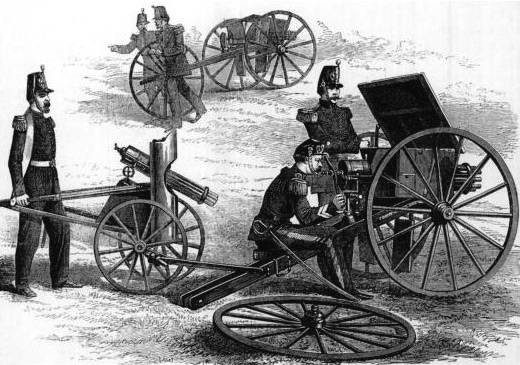
Mitrailleuse Bolle near Paris 1870 Photo by maquetland.com
and, aiming at the shore all their tools - caronades,
long running guns, Hotchkiss revolver machine guns,
gatling mitrailleuses, - thugs of the besiegers,
which fell like ears of corn cut with a sickle.
The shells hit them in the back, overtook, at the very sea,
sank ships at anchor or moored
the foot of the rocks."
Jules Verne "Mathias Schandorf"
History weapons. We have noted many times that as soon as some effective type of weapon appears, a lot of inventors immediately appear who try to either improve it or simply circumvent existing patents. Very often, the designs they come up with come out worse than the original ones, and most often they are more complicated. Moreover, it is interesting that this does not stop anyone - the struggle for their own, shtetl, goes on at the level of engineers, and at the level ... of the military themselves. No, just to buy a sample that has proven itself from the best side. So no - people tend to get even the worst in quality, but their own.
All this led to the emergence of a huge number of all kinds of weapons, most of which, however, ended up not on the battlefields, but in museums as curiosities. Today we will talk about two such designs, which are precisely the mitrailleuses of Bolle and Gabet.
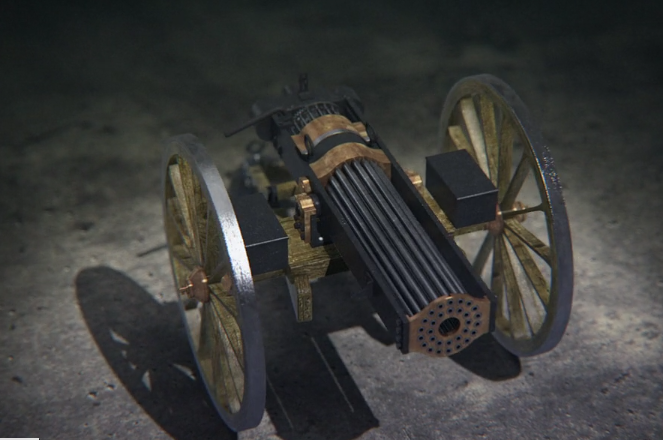
Mitraleza Bolle, unlike Reffy mitraleza, had a block of separate barrels of 13 mm caliber. There were 30 of them in total. The store was very similar to the Reffy store - that is, it was inserted from above. Photo maquetland.com
To begin with, the first mitraleza was invented by dentist Richard Jordan Gatling in 1862. It was used during the years of the Civil War in the United States, and quite successfully, as a result of which the popularity of the Gatling system led to the fact that it was subsequently repeatedly modified and tried to improve. The American Gardner, the Swede Nordenfeld, and the Briton Fitzgerald were noted in this field.
In France, their own creators of such weapons appeared: Joseph Montigny and Vercher de Reffy, only the barrels of their quick-shooters did not rotate when firing. The large-caliber five-barreled gun was invented by Benjamin Hotchkiss, and it was also put on ships, and quite successfully used on land.

The store has two handles. Accordingly, in the breech there are 30 drummers according to the number of barrels. They are cocked by the lever, which is on the right, turning down. Photo maquetland.com
During the Franco-Prussian War of 1870–1871 both designs and Reffi and Montigny were used in combat. But they did not make a big impression on the military and had little effect on the course of the war. At the same time, some private manufacturers began to produce such weapons, counting on high profits. Among them, we can name the manufacturer Ernest Bolle, who was inspired by Reffy's mitrailleuse and began to produce something similar, moreover, firing with the same cartridges, that is, cartridges from the Chaspo rifle. It seems that only a few copies were made, while they, like many others, were not used in the best way and therefore did not find success on the field.
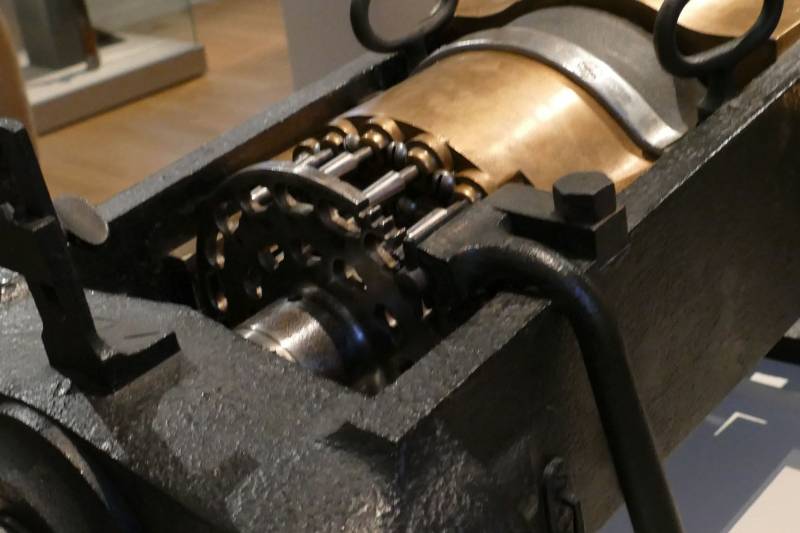
Strikers are armed! Photo maquetland.com
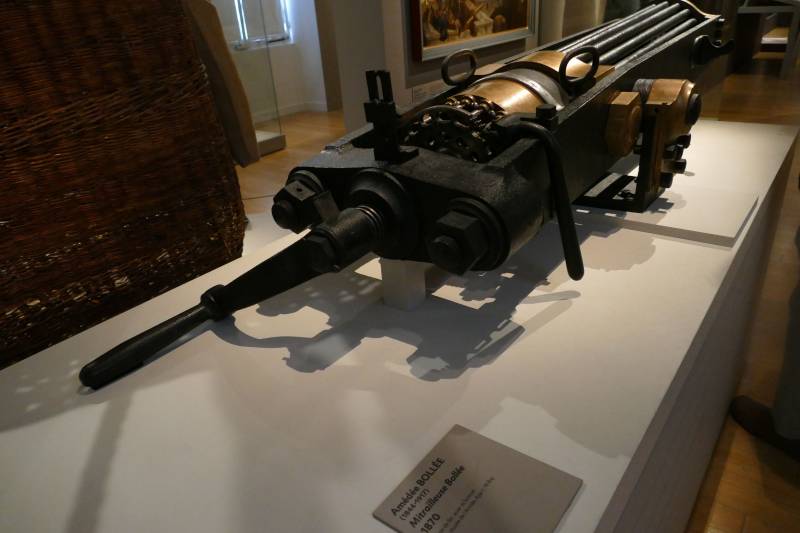
The breech of mitrailleuse Bolle 1870. The rotary handle is clearly visible, which the shooter rotated clockwise, while the drummers alternately descended, and so the shots were fired. Photo maquetland.com
There is information that a trained calculation could give up to 180 rounds per minute, while consuming 5-6 stores.
In the same way, they decided to try their luck at the Gabe Brothers enterprise, which had specialized in the construction of dredgers since 1855. It would seem, what is the connection here? But the owners of the enterprise, apparently, decided that since there is a war, any weapon will come in handy. They manage to develop in Lyon a "machine gun" (if this term can be used at all for a weapon that produces two volleys of four shots each) and even get an order for its production from the state.
The number of copies ordered varies from 50 to 60 depending on the sources of information, in any case, 30 francs without accessories would have been paid for the weapons produced.
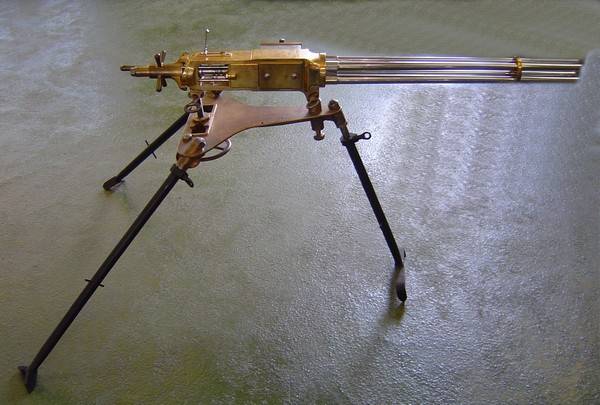
Mitraleza Gabe. Photo armesfrancaises.free.fr
The Lyon artillery administration was supposed to test the novelty, which made the conclusions based on the results of the tests not too comforting:
That is, there was definitely no doubt about the uniqueness of the mechanism, but its suitability for participation in hostilities was immediately called into question.
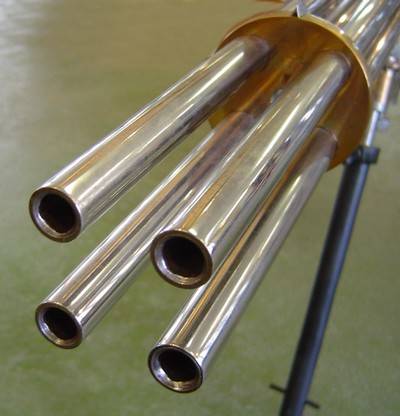
On it, unlike Bolle's mitrailleuse, there were only four trunks. Photo armesfrancaises.free.fr
Similarly, it was rejected by the Departmental Committee of National Defense, which tested a new weapon, called the "Gabe Quadruple Machine Gun." The device was said to be too heavy, impractical and inaccurate. Nevertheless, somewhere around 20-30 of these “machine guns” were fired and, moreover, hit the troops: some were handed over to the Vosges army, some to the Garibaldi formation and the corps in Savoy (4 copies).

The barrels are steel, the frame itself is bronze! Photo armesfrancaises.free.fr
After the end of the war, a special parliamentary investigation showed that it was not possible to use the Gabe machine gun in the army. Since the produced specimens were used very little and were preserved in good condition, it was decided to send them for remelting in order to use the materials from which they are made (bronze, steel).
However, fortunately for historians and weapon lovers, one copy was found in 1907 in the Algerian Artillery Department, so not all of them were melted down, as it turned out.
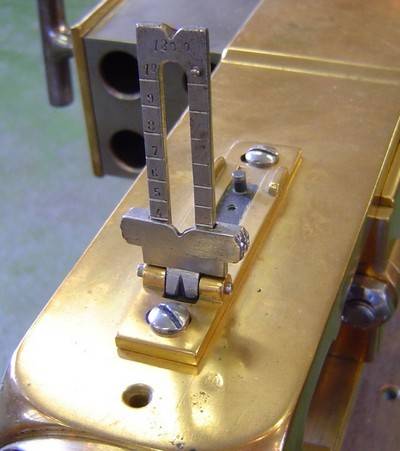
The sight allowed for fairly accurate fire at 400 m. Photo armesfrancaises.free.fr
According to the latest data, only four pieces of "Gabe machine guns" survived. One is in the Empery Museum in Salon-de-Provence. As for the other three, then ... somewhere they are, of course, but where exactly is not known exactly, or it is simply not reported.
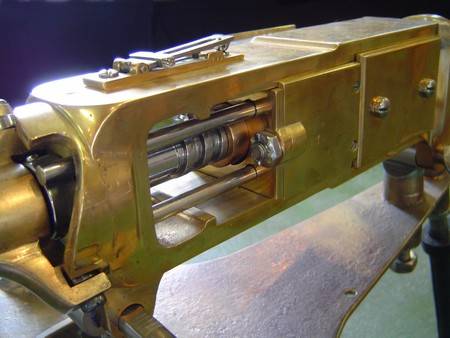
Mechanism. Photo armesfrancaises.free.fr
As for the design of the "Gabe machine gun", it is so elementary that it could not be easier. It consists of three parts: a body-trunks, a block of mechanisms and a magazine box, into which a magazine is inserted on the left, designed for only eight rounds.
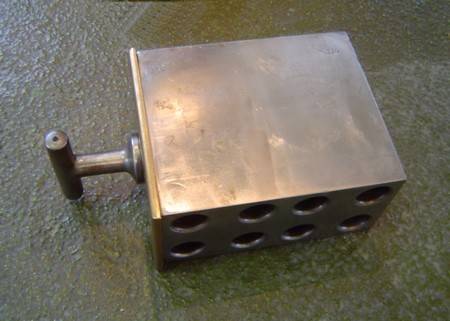
The mitrailleuse shop looked like a massive brass parallelepiped with a T-handle and eight chambers for cartridges. Photo armesfrancaises.free.fr

Shop loading. The shutters with drummers are clearly visible. Photo armesfrancaises.free.fr
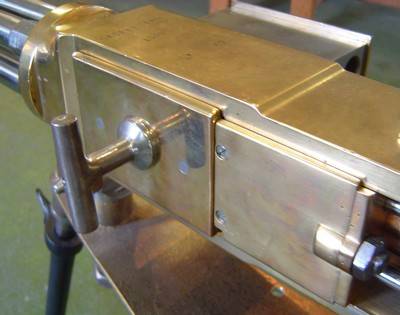
The store is fully loaded. After that, the shutters advanced the cartridges from the magazine into the chambers of the barrels. Photo armesfrancaises.free.fr
The barrels are fixed so that they cannot be dismantled by the user of the machine gun. The carriage itself is very simple: it allows you to point the weapon at the target and turn the block of barrels along the horizon. Shots are fired in a volley of four shots.
TTX "Gabe machine gun"
Store capacity: 8 cartridges
Caliber: 11-mm
Ammunition: cartridge mle 1866 with a lead bullet (25 g) and a powder charge (5,5 g of black powder)
Grooves in the barrel: 4 with a pitch of 550 mm
Initial speed of the bullet: 375 m / s
Practical rate of fire: 30 rds / min
Practical range: 400 m
Manufacturer: Gabert freres in Lyon
Period of use: 1870–1871
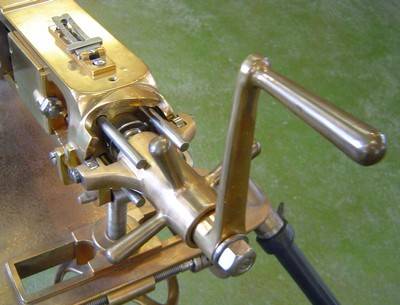
Turning the l-shaped handle produced a volley, rotating the cruciform handle led to the removal of the bolts from the store's chambers, pulling them back and moving the store to the right - another four chambers. A full turn of the handle meant a complete reloading of the mitrailleuse, after which it was again possible to shoot. Photo armesfrancaises.free.fr
Nevertheless, the very idea of a multi-barreled machine gun not only did not die over time, but, on the contrary, was further developed. The heirs of the "Gatling machine gun" with a rotating block of barrels of 5,56 mm, 7,62 mm and beyond appeared, including the 20-mm six-barreled Vulcan cannon and the seven-barreled monster of the American A-10 Thunderbolt-2 attack aircraft.
We have an AK-630M-2 "Duet" mount with two six-barreled 30 mm caliber assault rifles, while in China they decided to follow the path of increasing the number of barrels in one mount and created the "Type 1130" anti-aircraft gun with 11 barrels at once!
By the way, Gatling also had a 10-barrel installation, only the barrel block had to be rotated manually. But the “machine guns of Bolle and Gabe” did not have any heirs!
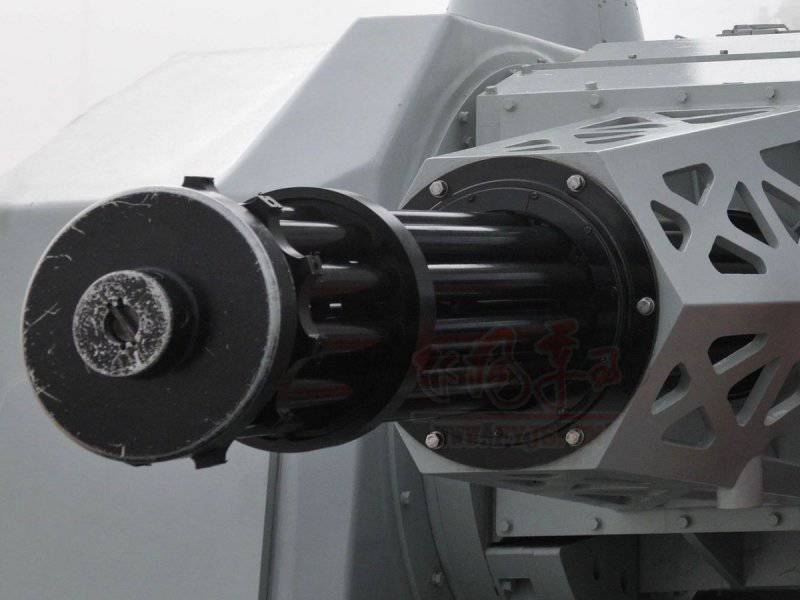
Modern Chinese 30-mm eleven-barrel. Photo bastion-opk.ru
Information